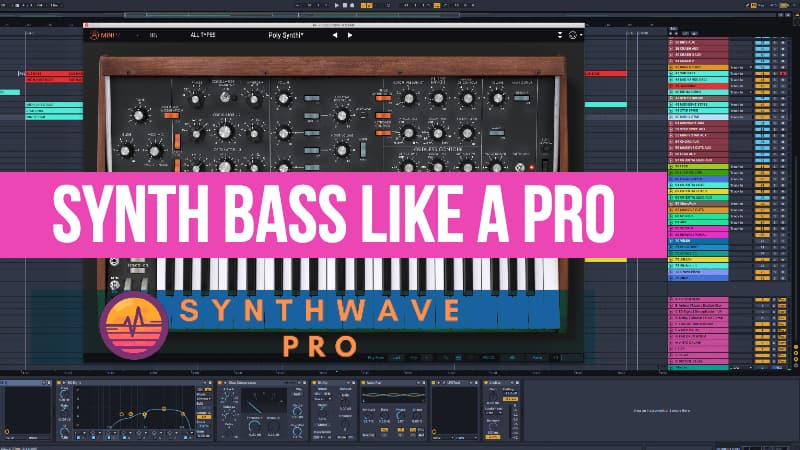Making your synth bass sound just right is challenging. Oftentimes, we stumble with note selection, groove implementation and overall bass line sequences making the process even more complicated. One of the most important components of synthwave music is the synth bass and the accompanying bass line that the instrument chooses to play. If ever you’re in doubt as to whether or not your song squarely falls within the synthwave genre, then consider making changes to your synth bass instrument. In this article we’ll uncover easy to follow tips on how to make better synthwave bass lines.
10. Use Sidechain Compression
Sidechaining or ducking as it’s commonly known is an integral part of EDM production. For instance, in modern synthwave music, the sound is so pervasive that it would be next to impossible to find a song on any given Spotify playlist void of the audible effect. A few producers have expressed their discontent with what they consider to be an overused effect, but sidechained basslines won’t be going anywhere anytime soon. When applied correctly, side chaining basslines let your kick drums punch through a seemingly dense mix while adding a bit of “pump” to your song. Again, don’t over do it. Oftentimes as little as 6dB of gain reduction is enough to be effective.
9. Setup Trigger Point of Waveforms
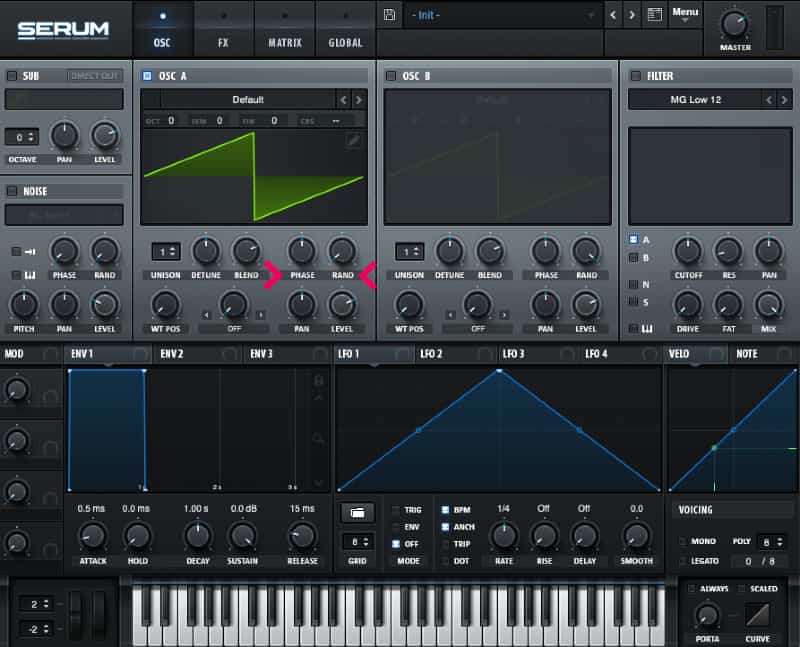
Each time a MIDI note is pressed, a synthesizer’s oscillator cycles through its waveform. While using a bass patch, remember to adjust the phase and rand control to ensure the waveform is triggered at the same point during the cycling phase. The result is a consistent bass tone ideal for subs and lower frequency sounds. In the case of a VST like Serum, the phase and rand control could be set to 180 and 0 degrees respectively.
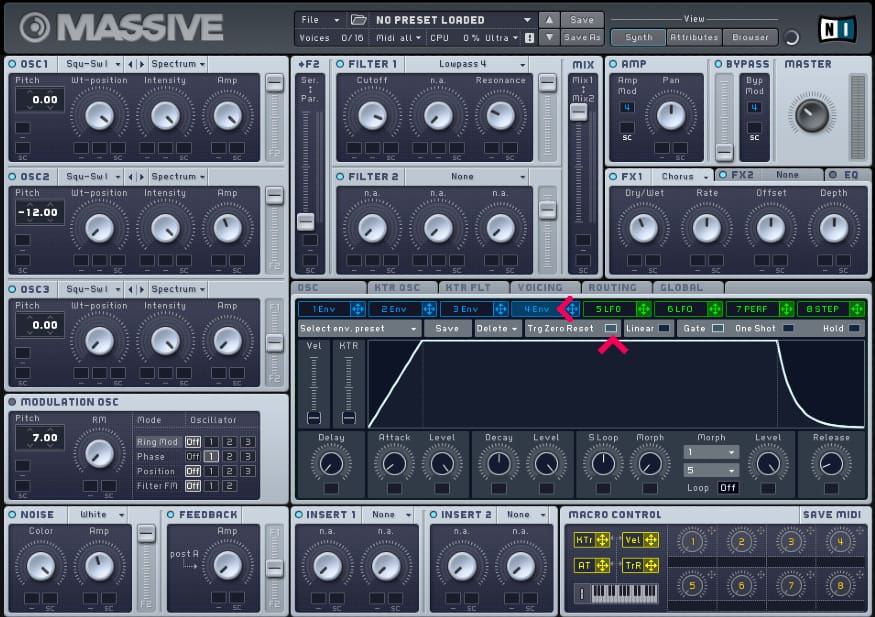
Similarly, Native Instruments Massive has a Trigger Reset Zero function so be sure it’s enabled.
Learn The Techniques Top Producers Are Exploiting To Program Synthesizers by Ear
8. Note Lengths Matter
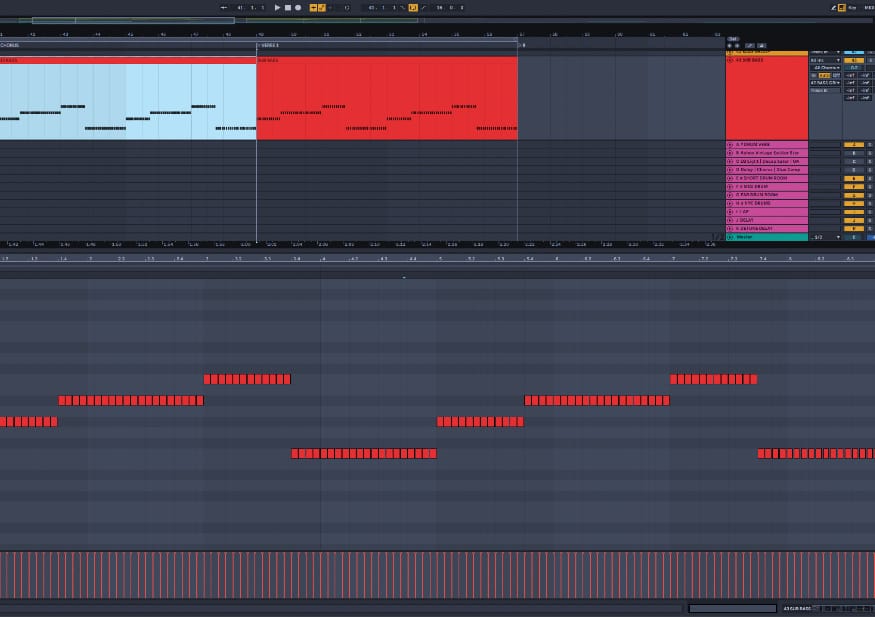

Add variety to your synthwave bass line patterns by altering the length of its notes. Inside your MIDI clip, extend a few notes so that not every hit is identical. Moreover, you may also highlight all of the notes of any given MIDI clip and shorten or lengthen its duration. The results offer a different groove that serves to delineate a section in your arrangement. For instance, use shortened notes for verse and build up sections as opposed to legato style bass lines for the chorus.
7. Use Chord Tones and Inversions For Better Synth Bass Lines
Typically, bass lines are made up of a chord’s root note. However, substituting the root note with its corresponding chord tones offers additional sonic variety. For example, a C minor chord with an Eb as its bass note is a viable option that differs from the expected C root note. Conversely, a G bass note under a C minor chord can also provide complexity. Finally, use your ears to ensure that the substitution compliments your synthwave track.
6. Layer Sub with Mid-Range Bass Instrument

It’s not uncommon for professional sound engineers to layer a bass instrument with a heavily distorted copy. For instance, add a second bass instrument whose pitch is set an octave higher. Next, with Ableton’s Amp plugin add lots of distortion or saturation making the sound seemingly aggressive. Finally, mix this version with the bass by sliding it into the mix. Lastly, add Ableton’s chorus plugin to widen the sound and high cut the lower frequencies so as to avoid clashes with its accompanying sub-bass. Toggle this mid-range bass track on or off during key moments of the arrangement.
5. Set Your Sub Bass To Mono
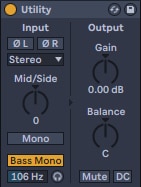
As a general rule, synth basses with content below 100 Hz set to mono sound better on club amplifiers. Use Ableton’s utility plugin to set the frequencies below 100 Hz to mono. Conversely, use the EQ 8’s mid-side processing to highpass the side channel’s low frequency content. Doing so keeps higher frequencies in stereo while the lower range is mono.
4. Use A Limiter
Use a limiter on a synth bass track to reduce excessive peaks. When set up correctly, a limiter reduces the dynamic range of a signal making it sit comfortably in the mix. Prior to using the limiter however, ensure that the bass patch’s velocity parameter is set to 0 making all of its notes similar in amplitude. Doing this greatly reduces the dynamic range of individual notes prior to entering the limiter.
- Learn more on Synth bass mixing
- Learn how to make synthwave snare drums
- Learn how to use foreshadowing on a synthwave track
- Learn how to create a whisper track
- Learn how to create better transitions in your arrangement
- Learn how to program synthesizers by ear the easy way
- Enroll in the synthwave course
3. Highpass Sub Frequencies
This is an obvious tip however many new producers believe that more bass equals a better bass line. On the contrary, a filter with a highcut at 40 Hz, not only cleans up the mix but it also provides additional headroom which translates to a louder mix.
Here is a tutorial on How To Widen Bass
2. Use Shelving Filter On Bass
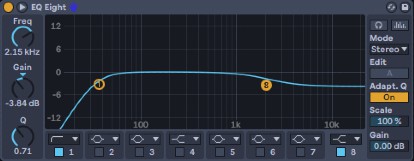
Use a shelving EQ to reduce the upper frequencies of your synth bass. Moreover, this provides some room for other instruments and drum parts such as hi hats to breathe. Lastly, the technique adds headroom making your overall final mix louder.
1. Use Automation
Automate the filter cutoff and sustain parameters of a synth bass patch. Many top synthwave producers will open and close the filter’s cutoff frequency during key moments of an arrangement. Not only does this add excitement to a song, it also provides excitement to what may be a mundane section of a composition.
Conclusion
In general, an effective synth bassline is an integral component of synthwave music production. Without it, songs fail to captivate listeners. While the goal is to make better synthwave basslines, the tips and tricks available to producers are plentiful. Experiment and use some of the techniques listed above.
Recent Posts
What’s the Most Frustrating Part of Making Music And How to Overcome It
Music creation can be one of the most rewarding forms of self-expression. But let’s be honest—it can also be maddening. That moment when inspiration strikes… only to be blocked by technical...
Finding time to produce music while managing a job can be challenging, but several strategies can help you balance both effectively. Prioritize Music Production Make music a priority in your...

